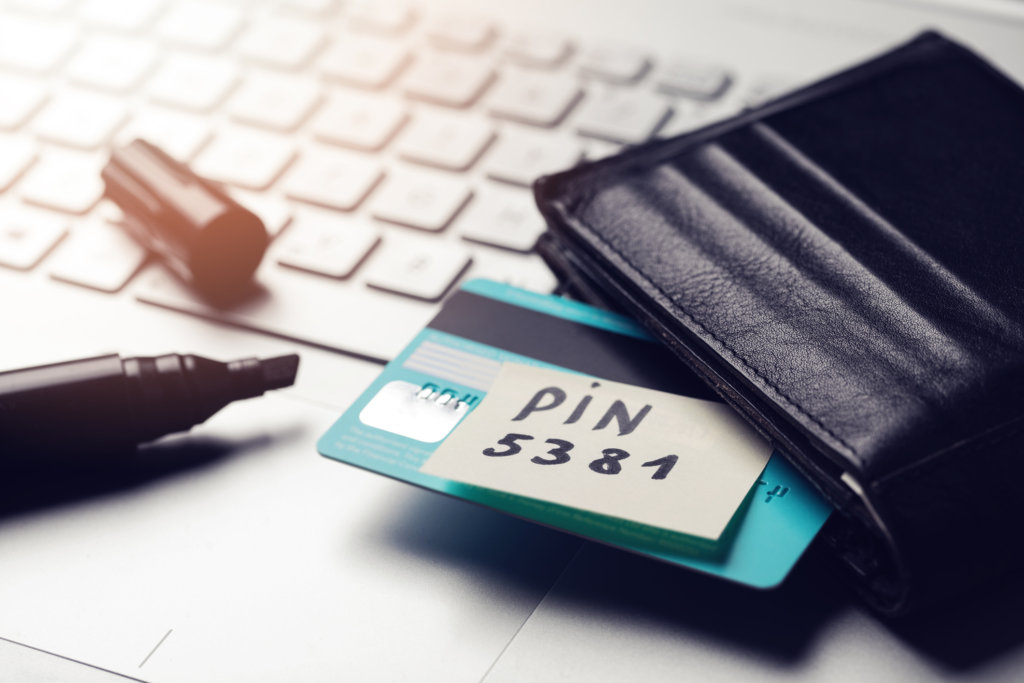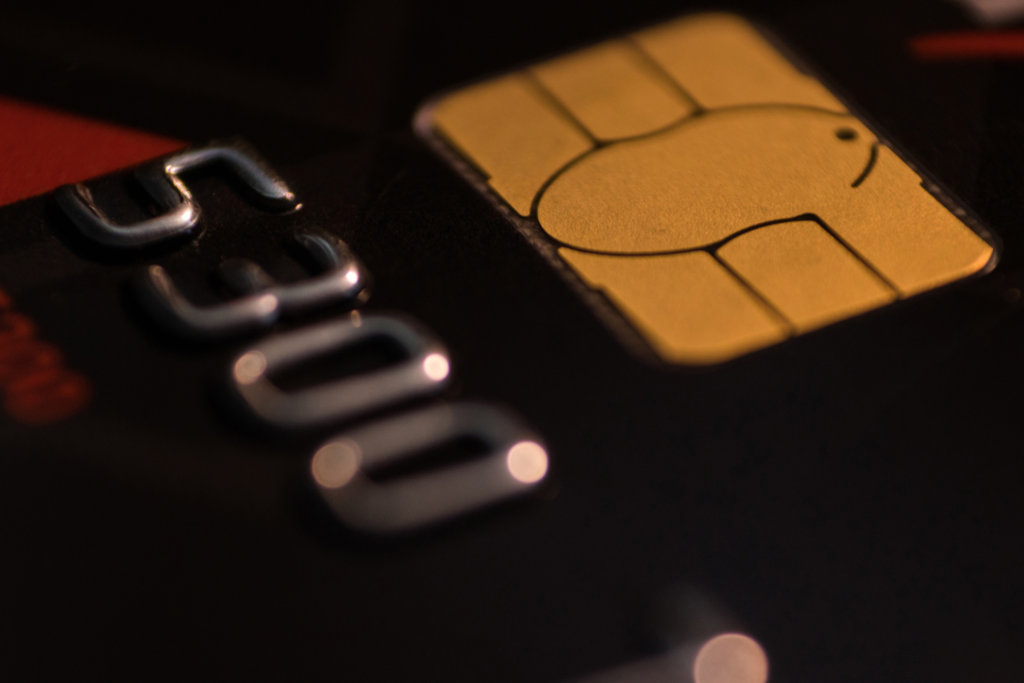By now, you’re used to the magnetic stripe on the back of your credit cards. You might even still use it from time to time. However, the use of strips on cards is becoming less common. For nearly five years now, credit card companies have been making the switch from magnetic stripe to chip cards. Why the change? Data security.
With so many different forms of payments nowadays, it’s hard to keep track of all your cards and digital wallets and payment apps, and fraudsters abound. Luckily, the chip card uses encrypted data to keep your bank information safe when paying with credit cards.
Each time you make a payment, the POS terminal will prompt you to insert your card. The chip card reader gathers the data internally, rather than through a quick swipe. This allows the data in the chip to change from payment to payment so it can’t be copied like the permanent data in a magnetic stripe. Among merchants who made the switch from magnetic stripe reader to chip card readers from 2015 to 2016, Mastercard noted a 54 percent decrease in credit card fraud costs. ID TECH wants to make that number even better. Our credit card terminals all come with the most secure chip card readers for your business. Whether mobile payments or countertop payments suit your business, we have the perfect solution for you.
How Chip Card Readers Work
Transaction codes change every time a payment is completed. Encrypted transactions make fraud much more difficult because payment details and cardholder information is hidden. Because chip card readers are still gaining popularity, credit cards now have a magnetic stripe and a chip reader in case a business has not made the switch to chip reading technology. Sometimes, a POS terminal will still ask you to provide a PIN or signature to authenticate a purchase.
Why is a PIN still necessary?
If chip cards are supposed to be more secure, you might question why a PIN or signature is still required. Not all payments will prompt you to input your PIN, but depending on the technology in the payment terminal and whether or not your card has a verification method tied to it, you might need this extra step.
When a chip card reader does not prompt you for a PIN, it means the transaction verification happened in real time. In other words, the payment went through right away and the communication between the bank, the business, and the card happened immediately. Because the transition from mag stripe to chip reader is still in progress, many terminals are not set up with chip-and-PIN technology, so chances are you won’t need both just yet.
The reason the PIN is required is not so much about the security of the chip, then, but more so it is used as a means to verify a payment in real time. Currently, terminals are more suited to prompting a signature to authenticate a payment. This will be the case until there has been a complete transition to chip-and-PIN terminals.
What does it mean to make the switch?
Your business will need to meet new liability and compliance standards as well as update hardware, software or both. ID TECH’s goal is to equip your business with the best payment options for your workflow.
Adapting your business and equipping it with payment methods your customers prefer tells your customers that you care. You want to make them feel more secure with their payments. You want to make their shopping experience more efficient.
Not only does it make for heightened security on your customer’s behalf, but it also lessens the chance of fraud on your behalf. It also means that the chances of someone using a counterfeit card at your store are significantly lower.
Which design works best for you?
Bulky and heavy says your business is outdated. We’ve modernized the POS system to fit your modern stores. The sleek design tells your customers that you are constantly innovating, on top of business trends and actively paying attention to how your customers prefer to pay. The terminals are customer facing, which supports their trust in your business because they can see the transaction occur right in front of them. Our countertop options have various makeups, so you can choose one that has a PIN pad, a magnetic card reader or a chip card reader — or one that has all 3.
If you like the idea of being able to move around your shop while you assist customers, a mobile payment system might be the best fit for you. You can pick a secure option that allows you to carry the POS with you, therefore letting you reach more customers and help them on the spot. A benefit of conducting a transaction where you’ve made a sale rather than sending your customer up to the cashier? It saves time and can even make you money. Fewer customers will have to wait in line, increasing foot traffic because you won’t have shoppers coming in, seeing a long line and leaving. Shoppers need more time in the day. With a mobile payment system where they can easily insert their card and avoid lines makes for happy customers and positive store reviews.
Sometimes, unattended payments are the easiest way to go. The time you would take conducting transactions with one customer can be spent helping another customer. Whether you work in a restaurant and choose to let your guests complete their payments with a tablet on the table or you own multiple parking garages and need new hardware enabled with chip card readers, ID TECH has the simplest solutions. Because unattended payment kiosks require specific designs and software, it can be difficult to know exactly what you need. We’ve been doing this for over 30 years, and we’re committed to helping you customize a payment system suitable for your business.
What happens inside the chip card reader?
Rather than the credit card swipe, it’s now the credit card “dip.” You insert the chip side into the reader and data from the chip is transferred to the financial institution connected to the card. From there, a code is created for that particular purchase and the payment is verified. While card dipping does take a bit longer than the swipe, it’s more worth your while to know your transaction was credible and secure.
Does the chip work any other way?
Yes. The data in credit card chips can be read by Near Field Communication readers, also known as contactless payment. This works well for businesses that want to switch to contactless payments only, but worry they’ll lose customers who still prefer cash or card. NFC readers work with digital wallets and credit card chips, though, so NFC-equipped software will be your best bet if you prefer frictionless payments but still want to give your customers options.
What does the EMV timeline look like?
Banks began issuing cards with chip readers in them around 2015. Shifting from magstripe to chip cards isn’t just a big undertaking for banks and their customers, but also for businesses that also had to update all their hardware and software and purchase new POS systems that accepted the chip.
It is estimated that as of July 2017, 85 percent of U.S.-issued debit cards had chips in them, and it will probably be a couple more years until the shift is complete.
Interested in learning more? Contact us today!
Have you been interested in making the transition from mag stripe to chip card reader technology at your business? If so, you’ve come to the right place. Our ID TECH professionals have all the information and support you need to get started. Still have questions? Reach out. Otherwise, take a look at our website and explore the options yourself. Whether you want contactless payments or a mix of credit and mobile payments, you’re sure to find a POS that works for your business.


